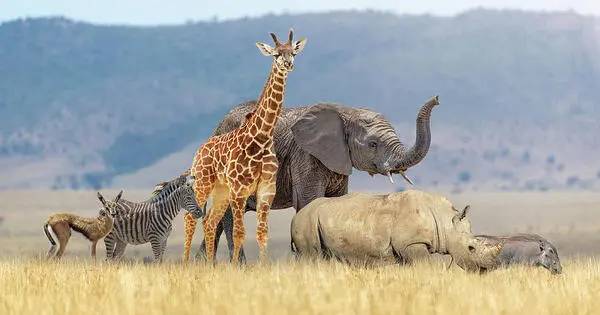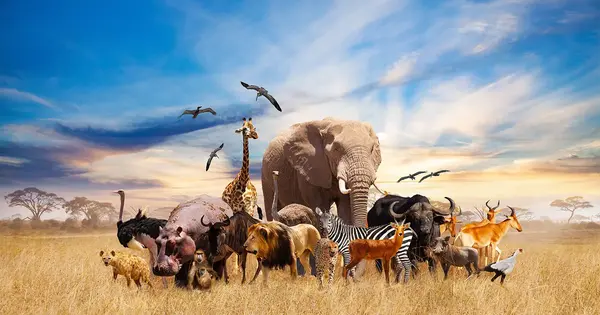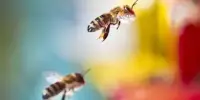A new study looks at how various mammals react to climate change. Animals that live for a long time and/or have fewer offspring, such as bears and bison, are more resilient than small animals, such as mice and lemmings.
Extreme weather, such as prolonged drought and heavy rainfall, is becoming more common as the global average temperature rises – and this trend will only worsen in the coming decades. How will the Earth’s ecosystems react?
“That is the big question and the background for our study,” said biologist John Jackson, who co-authored a new study published in eLife with his biologist colleagues Christie Le Coeur from the University of Oslo and Owen Jones from the University of Southern Denmark.
John Jackson now works at Oxford University, but he was at the University of Southern Denmark at the time of the study. Owen Jones is an associate professor at the University of Southern Denmark’s Department of Biology.
We expect climate change to bring more extreme weather in the future. Animals will need to cope with this extreme weather as they always have. So, our analysis helps predict how different animal species might respond to future climate change based on their general characteristics – even if we have limited data on their populations.
Owen Jones.
Llama, moose and elephant
The authors compared data on population fluctuations from 157 mammal species from around the world to weather and climate data from the time the animal data were collected in their study. There is at least ten years of data for each species.
Their research has provided insight into how animal populations have fared during times of extreme weather: have they become more or less numerous? Did they have more or less children?
“We can see a clear pattern: Animals that live a long time and have few offspring are less vulnerable when extreme weather hits than animals that live for a short time and have many offspring. Examples are llamas, long-lived bats and elephants versus mice, possums and rare marsupials such as the woylie,” said Owen Jones.
Less affected by extreme weather: African elephant, Siberian tiger, chimpanzee, greater horseshoe bat, llama, vicuña, white rhinoceros, grizzly bear, American bison, klipspringer, Schreibers’s bat.
More affected by extreme weather: Azara’s grass mouse, olive grass mouse, elegant fat-tailed mouse opossum, Canadian lemming, Tundra vole, Arctic fox, stoat, common shrew, woylie, arctic ground squirrel.

Quick drop – but also quick boom
Large, long-lived animals are better able to cope with conditions such as prolonged drought; their ability to survive, reproduce, and raise their offspring is not affected to the same extent as small, short-lived animals. When conditions become difficult, they can, for example, focus their energy on one offspring or simply wait for better times.
Small short-lived rodents, on the other hand, experience more extreme population changes in the short term. In the event of a prolonged drought, for example, large parts of their food base may disappear more quickly: insects, flowers, fruits, and they are left to starve because they have limited fat reserves.
The populations of these small mammals may also boom to take advantage when conditions improve because, in contrast to large mammals, they can produce many offspring.
Not the same as risk of extinction
“Extreme weather causes these small mammals to react quickly, and it works both ways. As a result, their vulnerability to extreme weather should not be equated with the risk of extinction “stated John Jackson He also emphasizes that an animal species’ ability to withstand climate change should not be used to determine its vulnerability to extinction: “Habitat destruction, poaching, pollution, and invasive species are factors that threaten many animal species — in many cases even more than climate change,” he says.
The animals we don’t know much about
The researchers’ study not only gives an insight into how these specific 157 mammal species react to climate changes here and now. The study can also contribute to a better general understanding of how the planet’s animals will respond to ongoing climate change.
“We expect climate change to bring more extreme weather in the future. Animals will need to cope with this extreme weather as they always have. So, our analysis helps predict how different animal species might respond to future climate change based on their general characteristics — even if we have limited data on their populations,” said Owen Jones.
An example is the woylie, a rare Australian marsupial. Biologists do not know very much about this species, but because it shares a similar life style with mice — that is, it is small, lives for a short time and reproduces quickly — it can be predicted that it will respond to extreme weather in a similar way to mice.
Entire ecosystems will change
“In the same way, there are many animal species about which we know very little but whose reactions we can now predict,” John Jackson explained. In this way, the researchers anticipate that the ability of different animal species to adapt to climate change is related to their life strategy, which can aid in the prediction of ecological changes:
As climate change alters habitat suitability, species may be forced to relocate to new areas as old ones become inhospitable. These shifts are determined by species’ life strategies and can have a significant impact on ecosystem function.
















